|

Mulnayak |
Tirth |
Historicity |
Other
Temples |
Works of art and Sculpture
|
Guidelines |
Trust |
Photo Gallery
Mulnayak: Nearly 216 cms. high, white-colored and brightly
shining idol of Bhagawan Adishvar with a serene and peaceful face and in
the Padmasana posture..
Tirth:
It is on the Shetrunjaya Mt. at a distance of nearly six kilometers near
the city of the bank of the river Shetrunjaya.
Historicity: This tirth is
known as the eternal tirth. The ancient name of the city of Palitana was
Padliptapur. In olden times this mountain was also called Pundarikgiri.
Palitana is a city of temples. Worshippers come to Palitana, take a bath
in the river, bow down to the 99 idols and cross the ocean of re-births.
In this avasarpinikala (the descending half of the wheel of time), the
temple was renovated 16 times as under.
First Renovation : By Chakravarti Bharot, the son of
Bhagawan Adinath.
Second Renovation : By the King named
Dandavirya.
Third Renovation : By Shri Ishaneshvar in the
interim period between the times of the first and the second
Tirthankaras.
Fourth Renovation : By Mahendra of the fourth
upper world(dev-loko).
Fifth Renovation : By Brahmendra of the fifth
upper world.
Sixth Renovation : By Chamarendra, Indra of
Bhavanapatis.
Seventh Renovation : By Sagar Chakravarti, the
second Chakravarti of the times of Bhagawan Ajitnath.
Eighth Renovation : By Vyantarendra in the
times of Abhinandan Swami.
Ninth Renovation : By King Chandrayasha in the
times of Chandraprabh Swami
Tenth Renovation : By Chakradhar, the son of
Bhagawan Shantinath in the times of Bhagawan Shantinath.
Eleventh Renovation : By Ramchandraji and
Lakshamanji in the times of Munisuvrat Swami.
Twelfth Renovation : By the five Pandavas in
the times of Bhagawan Neminathji.
Thirteenth Renovation : By Sheth Javed Shah of
Mahuva in the year 108 of the Vikram era. He spent a million gold mohurs.
In exuberance of joy, he died and was re-born in the fourth upper world
(dev-loke).
Fourteenth Renovation : By the advisor Bahud
in the times of Kumarpal in the year 1213 of the Vikram era.
Fifteenth Renovation : By Shri Samara Shah in
the year 1371 of the Vikram era.
Sixteenth Renovation : By Shri Karama Shah of
Chitod on the auspicious sixth day of the dark half of the month of
Vaishakh in the year 1587 of the Vikram era.
The renovations mentioned
above, give us a glimpse of the ancient times. The auspicious occasion of
bathing the idol in holy water on the mountain was splendidly celebrated.
The festival of the last installation of the idol by Sheth Rajnikant
Mohanlal Zaveri (Devadi) and Sheth Shantichand Balubhai Zaveri was
celebrated under the inspiration of His Holiness Acharya
Vijaychandradaysurisvarji Maharaj Saheb on the sixth day of the bright
half of the month of Posh in the year 2047 of the Vikram era in the
presence of 27 Acharyas 3200 Sadhusadhvis and lakhs of Shravakas and
Shravikas. This splendid festival reminded one of the sixteen old
renovations and the city of Palitala looked majestic like Indra’s capital.
Here in exuberance of joy, the heart of Rajnibhai stopped functioning and
he left for a higher state of life. Even today necessary renovations are
being made by the Svetambar Jain Sangha and the Anandji Kalyanji Trust.
Leader of the Sangha of Mt. Shetrunjaya.
On Mt. Shetrunjaya, there
were many sangha leaders from Chakravati Bharat to Samara Shah and even
the present times have seen many sangha leaders. Many sanghas come on foot
or in vehicles to pilgrimage this mountain. Pilgrims, who come on foot
follow the necessary code of conduct, devote themselves to penance or
worship and devoutly reach the sacred place.
From this holy mountain,
many infinite souls went and will go to Maksa. Twenty-three Tirthankaras
other then Neminath put their on feet on land and added to its holiness.
Everyone wishes touch the sand made holy by the touch of feet of Adinath
in order to get liberated from good and bad karma and attain Moksha. As
the navkar mantra is great and beneficent, so Mt. Shetrunjaya is great and
beneficent.
The Jaytaleti :
In the Jaytaleti, there are 28
temples in all. In them, there are 41 foot-idol. Pilgrims visit at least
five temples and the first of them is the Jaytaleti. Pilgrims put the sand
of this place on their head and go further and bow down to the idol in the
Dharmadas Jain Temple. Then of they reach the beautiful and artistic
temple with a vast open square. The chief idol there is of Bhagawan
Adishvar. In front of the temple, there is a temple of Pundarik Swami.
Inside, there is Jalmandir on the left-hand side. There is an idol of
Bhagawan Adishvar standing in deep meditation. There is mini-Shetrunjaya
with nine peaks. The pilgrims who cannot climb the mountain can bow down
the idol there.
There is a temple of
Saraswatidevi near the Samavasaran temple to the right of the road
ascending from the Jaytaleti to the mountain. The serene idol of
Saraswatidevi on the goose is very ancient and impressive Here gurus and
pandits practiced penance. School-going children are specially brought
here. This temple was installed in the year 1860 of the Vikram era. The
Jain religion is great and its tirths are spectacular and wonderful.
Showing the worship of the worshippers, charitability of the donors,
sadhana of spiritual endeavourers and equanimity of Sadhus, these tirths
inspire the pilgrims to cross the ocean of samsara.
The samavasaran temple is
the symbol of this aim. It presents many tirths at the same place. The 108
life-sketches are excellent works of sculpture. They are splendid beyond
imagination. For scholars who are thirsty of knowledge and for lovers of
sculpture, this is a small University. There are idols of tirthankaras
facing temple the 108 idols of Bhagawan Parshvanath in the samavasaran
temple. The 108 ft. high on the vast piece of land built near babudera at
the height of 81 ft. from the foot of the Mt. was built under inspiration
of His Highness Acharya Vijaychadrodaysurisvarji. In took 14 year of hard
work to build it. Outside, one sees the wall paintings of Jain tirths.
They are tons painted in various colors. Above all, the Ashok tree and the
Chaitya tree weighing 500 are there. On the gem-pillar, there is a
clinches high, four-mouthed idol of Bhaghawan Mahavir Swami. It seems as
if he is giving sermons.
Going further, one comes to
the hado of Hingraj. Ambikadevi is known here by the name of Hingarajmata,
the presiding deity on this hill. In ancient times, the pilgrims sometimes
lost their way on the hills. They then prayed to Hingrajmata and found
their way. This peaceful and lovely place is most suitable for sadhana.
Even today, one sees the miracles of Padmavatidevi. On seeing the tunk of
the chief temple of Dada and the summits of the nine tunks, one dances
with joy. Then passing by the temple of Varikhijj, the Hirakund, the
temples of Rama, Bharat and Thavachchaputra, one reaches Hanumandhara.
Here, the road to the right leads to navtunk and the road to the left to
the tunk of Dada.
On the way to Navtunk,
there is an entrance window. Entering the window, one comes to the shrine
of Angarsha, the Muslin saint. In the Muslim age, a Muslim King erected it
for protection of the tirth.
Then one comes to the
Narsinh Kesharji tunk built by Narsinh Kesharji in the year 1921 of the
Vikram era. The chief idol there is of Bhagawan Shantinath. Then there is
the tunk of Choumukhji. It is the highest tunk on the mount. It was
renovated by Sheth Sadasomji in the year 1975 of the Vikram era.
Behind this tunk, there are
idols of Pandavas. The Chhipavasahi tunk was built by Chhipa brothers in
the year 1791 of the Vikram era. The chief idol is of Bhagawan Adinath.
The Sakarvasahi tunk was built by Sheth Sakalchand Premchand in the year
1893 of the Vikram era. The chief idol is of Bhagawan Chintamani
Parshvanath. The Nandishvar tunk was built by Smt. Ujambai in the year
1893 of the Vikram era. The chief idol is of Bhagawan Chandranan. The
Hemvasahi tunk was built by Sheth Hemabhai of Ahmedabad in the year 1886
of the Vikram era. The chief idol is of Bhagawan Adinath. The Premvasahi
tunk was built by Premchand Modi in the year 1843 of the Vikram era. The
chief idol is Bhagawan Adishvar. The Balavasahi tunk was built by Balabhai
in the year 1893 of the Vikram era. The tunk of Motisha Sheth was built by
Sheth Shri Motisha in the year 1893 of the vikram era. The chief idol is
of Bhagawan Adishvar.
Besides all the above tunks,
the vast multitude of temples adds to the glory and grandeur of the
mountain. Behind the mountain, there are Pages of gheti (ewe’s feet).
There are ancient foot-idols of Bhagawan Adishvar. The road outside the
chief tunk, leads there. The return journey to this place, brings a double
reward.
Then comes Rampol. It is an
artistic and beautiful gateway to Mokshanagar, the city of temples. The
road to the left is the round road of 6 gaus. (1 gau = 3.2 kms). To the
right of Rampol, there is a water-hut. It is built by Manibhai Lalbhai of
the Jivanamani Sadvachanmala Trust. On entering Rampol, one comes to the
tunk of Sheth Motasha. Then there is a five peaked temple. Then one comes
to the three-peaked temple. The Sagalpol is a resting-place for women who
carry children to school. The road passing between Sagarpol and the
Motasha tunks leads to Gheti’s paga (ewe’s foot-idols). Then there are
Vaghanpol, the tunk of Vimalvasahi, the temple of Bhagawan Shnatinath and
the small temples of Shri Chakreshvaridevi and Shri Padmavatidevi. In
front of the small temples, there is a temple of Kavad Yaksha. Then there
is an artistic temple of Bhagawan Neminath. It has a raised square in it.
Further, there is a Paap-punya window with a statue of a female camel. The
pilgrim is supposed to pass between her legs. It is, therefore, also
called the moksha-window. Thus passing by a number of temples, one reaches
Hathipol. The new gate of Hathipol is splendid and delightful. There are
lovely stone elephants on both sides. Then one comes to the temple of
Bhagawan Adhishvar. On seeing the chief idols of Bhagawan Adinath in the
beautiful large temple with a series of domes and charming high summits,
the heart of the worshippers dances with joy, the soul delights and the
worshippers respectfully bow their heads down to the feet of God. The
exhaustion of the pilgrims who have climbed 3800 steps is instantly
removed.
The construction of the
temple is wonderful, elegant and very artistic. 1245 pitchers and 21 idols
of lions brightly shine in the temple. The four yoginis, the ten digpals,
72 dev-kulikas, the four gavaxesx, the 32 dolls and the 32 torarchs, make
the temple look very beautiful and extraorindary.
As the tunk of Dada has
three (paradakshinas) round side-passages, all small as well as big
temples can be seen. The round side-passage represent knowledge, faith and
conduct. Passing through the first passage, one sees the Sahasrakund
temple, the foot-idols under the Rayan tree, the temple of idols of feet
of Ganadhar and the temple of Simandhar Swami. Passing through the second
passage, one sees the new temple of Bhagawan Adishvar, Mt. Meru, the
temple of samavasaran and the temple of Samat Sikhar. Passing through the
third passage one sees the temple of Astapad, the new tunk, the temple of
Gandhariya Chowmukhi and the temple of Chowmukhji.
Other Temples: In this holy city of temples there are very
many temples. Among them, the Vardhaman Jain Agam mandir, the Minakari
temple, the Jambudvip temple and the Kesariyaji temple are unsurpassed and
extraordinary. The Vijnan Bhavan in the Jambudrip temple is an excellent
work of art and explains the Science of the Jain religion. It is really a
challenge to modern scientists.
Works of art and Sculpture: This mountain has 3800 steps. On
it, there are 700 temples with summits. 7000 idols are installed in them.
The artistry and sculpture of these temples aptly illustrate the ancient
art. How could the large marble stones be carried to the tops of high
hills, thousands of years ago when modern machines were not available?
This is a puzzle of modern architects and engineers.
Guidelines:
The nearest railway station is Palitana. It is at a distance of 48
kilometers from Bhavnagar and 30 kilometers from Shihor. Bus service and
private vehicles are available here. The foot of the hill is at a distance
of 105 kilometers from Palitana. The ascending road from the foot of the
hill to the chief tunk, is four kilometers long. There is a provision for
swinging-cots for weak and old people. At present, there are a thousand
men who carry pilgrims in swinging-cots. In Palitana, there are nearly 150
dharmashalas with many facilities. There are many upashrayas, bhojanshalas,
jnanmandirs, pathshala, chhatralayas etc. Under the inspiration of His
Holiness Vijayvishalsensurisvarji Maharaj Saheb, the vast Jainkala
Sansthan Museum is recently built at the foot of the hill near Shri
Kesariyaji temple. It is intended to preserve the very ancient cultural
heritage of the Jain religion.
Trust: Anandji Kalyanji Pedhi, Taleti
Road, Palitana-364270.Dist Bhavnagar, Gujarat State, India.
Bhagawan Adishvar
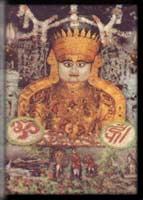 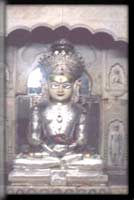 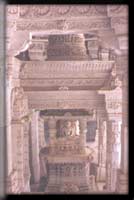
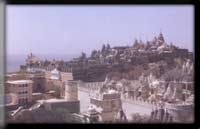 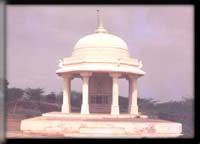
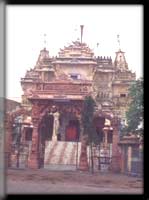 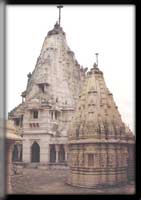 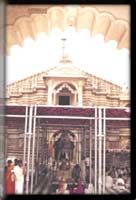
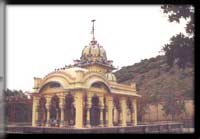 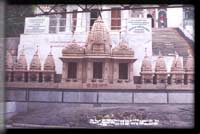
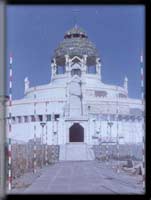 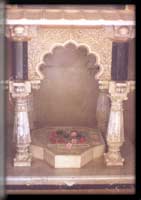 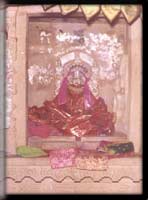
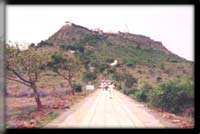 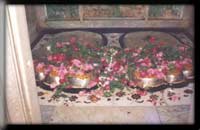
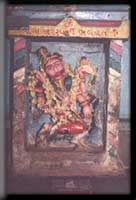 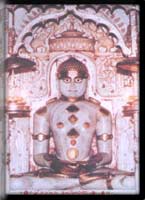 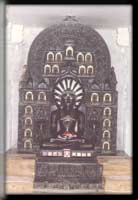
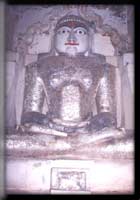 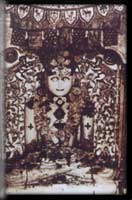
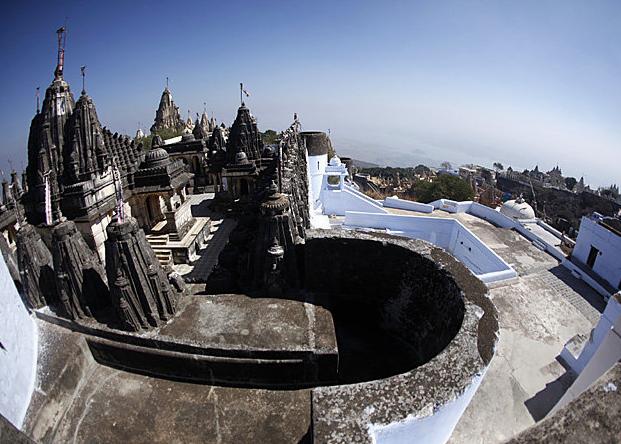 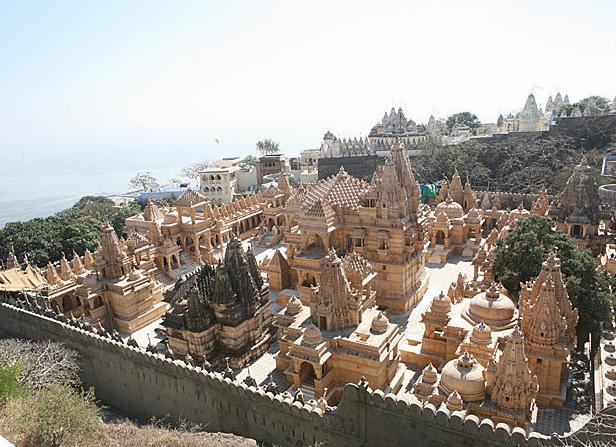 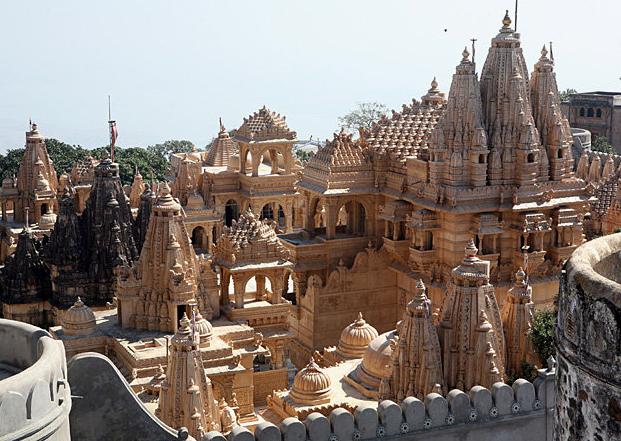
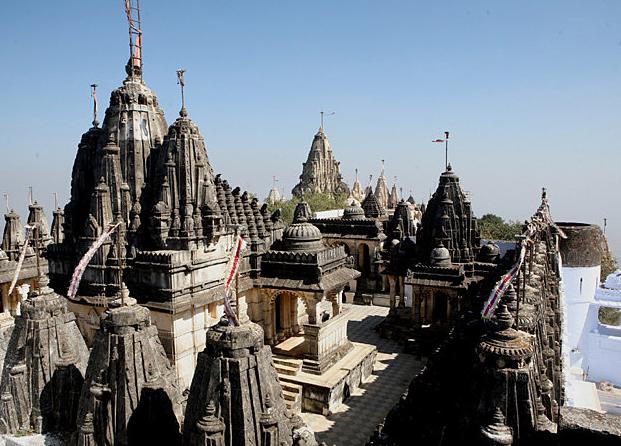 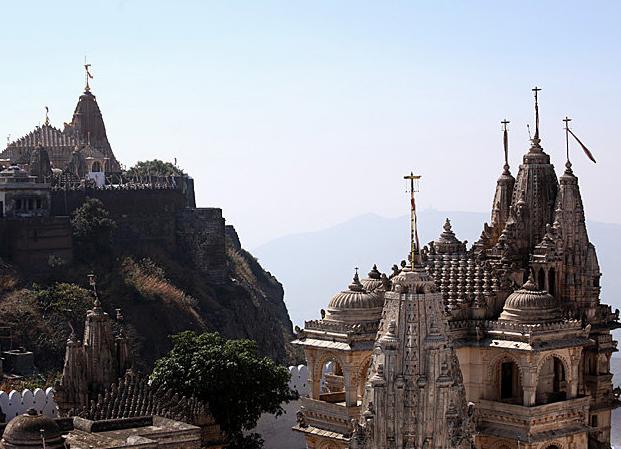
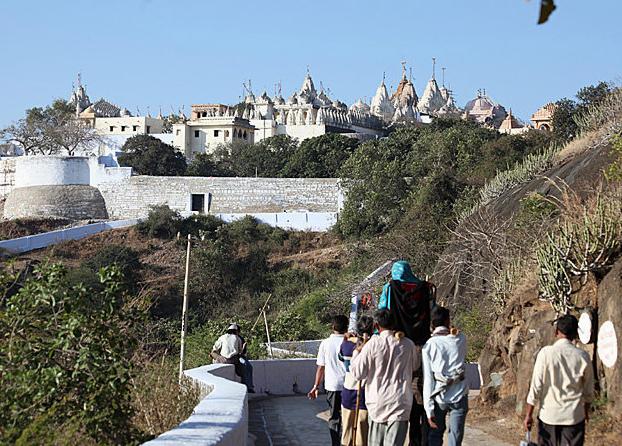 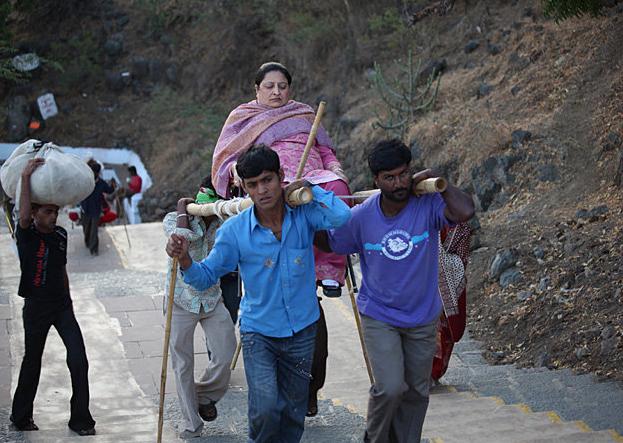 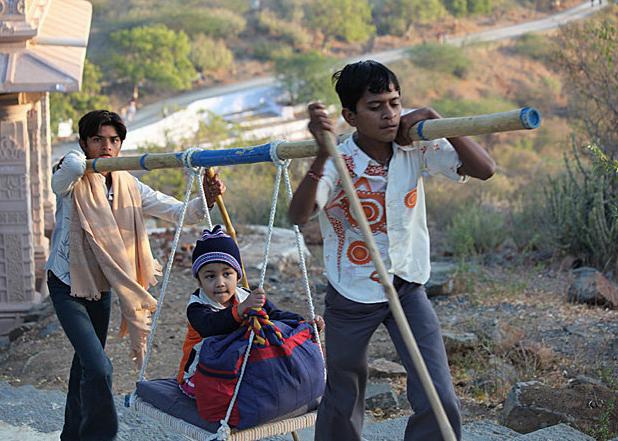
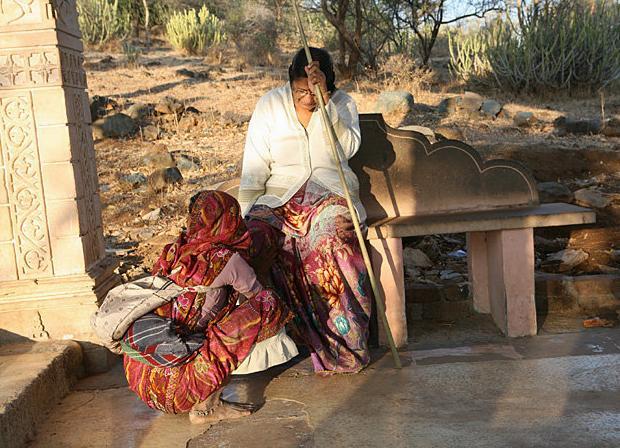 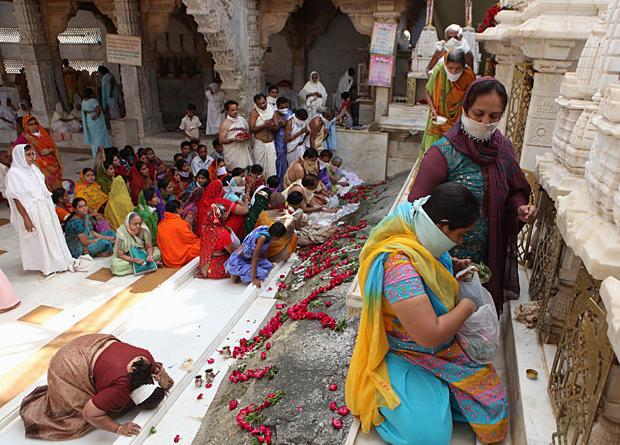
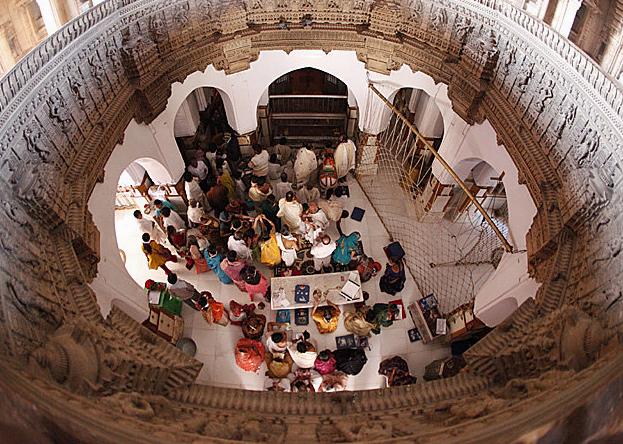 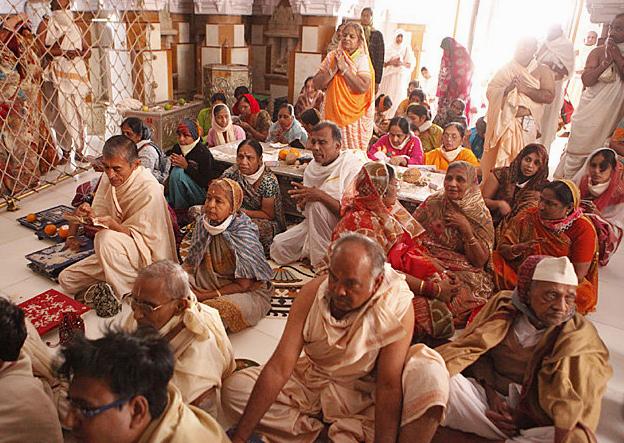 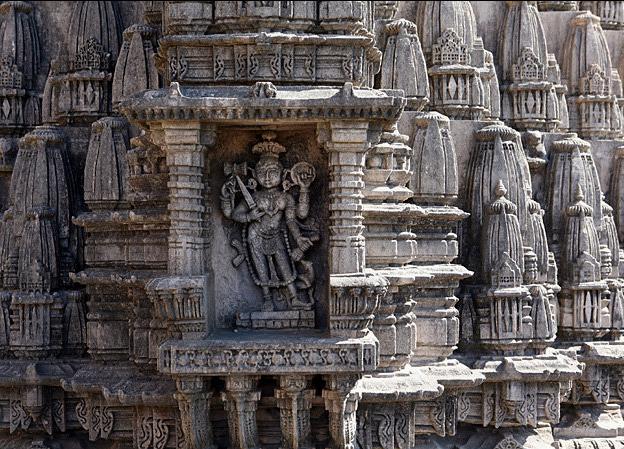
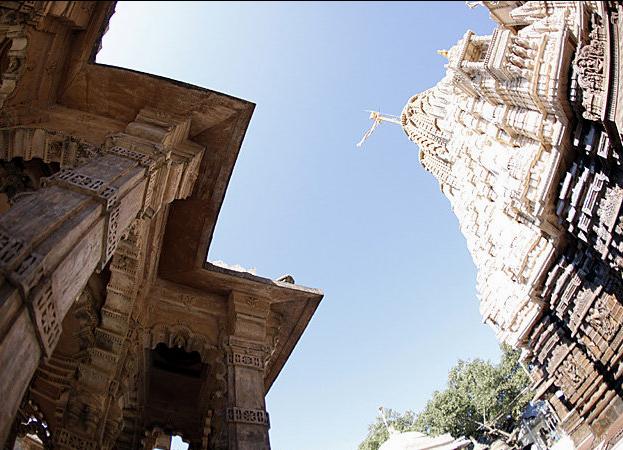 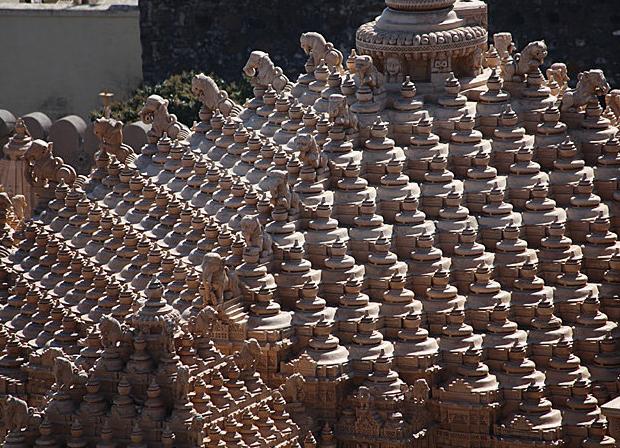
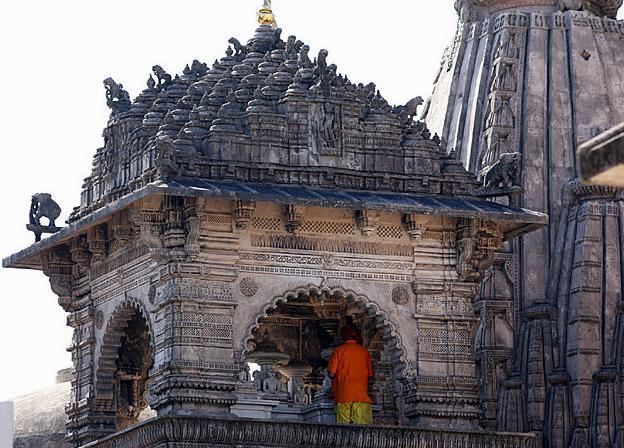 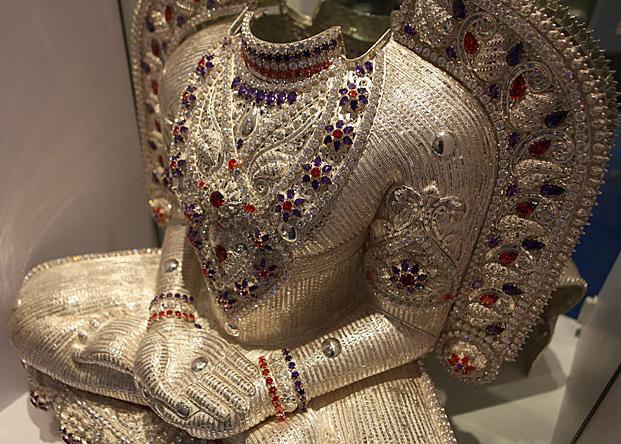 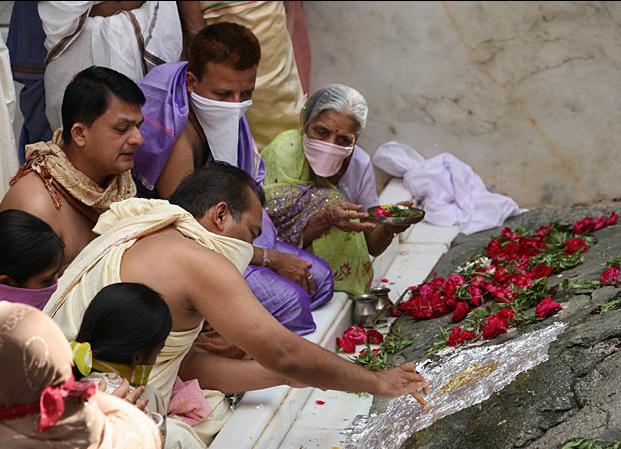
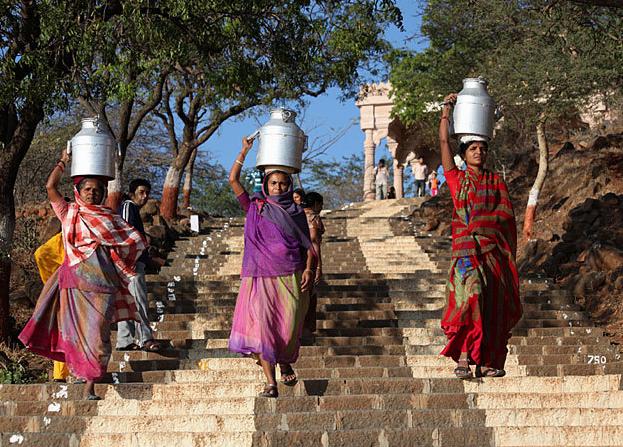 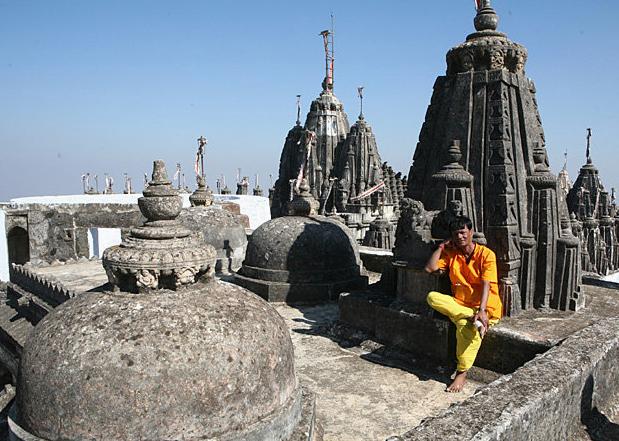
|

